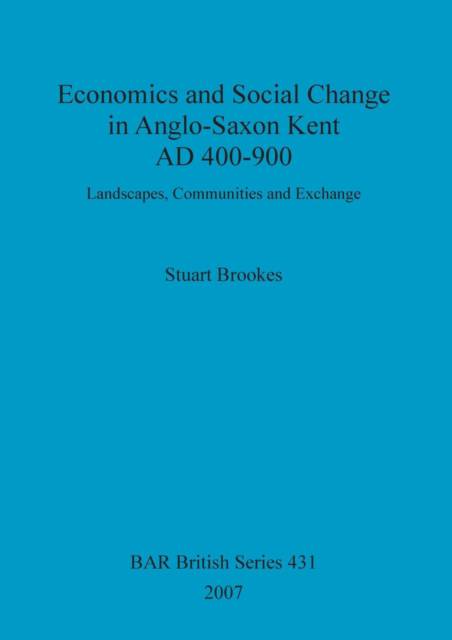
- Retrait gratuit dans votre magasin Club
- 7.000.000 titres dans notre catalogue
- Payer en toute sécurité
- Toujours un magasin près de chez vous
- Retrait gratuit dans votre magasin Club
- 7.000.0000 titres dans notre catalogue
- Payer en toute sécurité
- Toujours un magasin près de chez vous
Economics and Social Change in Anglo-Saxon Kent AD 400-900
Landscapes, Communities and Exchange
Stuart BrookesDescription
This book examines archaeological and historical evidence for the socio-economic organization of the kingdom of East Kent, England, as a territorial and social system during the Early to Middle Anglo-Saxon period (AD 400-900). Explicit archaeological and theoretical frameworks are considered to propose a hierarchical model of the spatial organization of communities as a way of providing a micro-economic case study of state formation. In addition to other classical economic and geographical analyses applied, the distributional approach examines the frequency or quantity of commodities with respect to units of economic consumption, such as individuals, households and communities. By examining the saturation levels of community consumption as represented in burial assemblages, a hierarchical model of value regimes underlying exchange sub-systems is suggested. Taken in combination with an analysis of the geographical organisation of settlement, the author argues a thesis on the way regional space was socially and spatially constructed in ways that restricted and monopolised allocative and authoritative resources. Correlations between spatially-distributed phenomena and features of the physical environment are assessed in order to consider the social dynamic in land-holding underlying the territorial and spatially-definable conditions of reproduction. An assessment is made of the importance of restrictions on the movement of people in social formation, by analysing the relationships between routes of communication, the mortuary landscape, and the visual experience of movement. Finally, consideration of these phenomena with respect to changing exchange systems provides models of early medieval state formation.
Spécifications
Parties prenantes
- Auteur(s) :
- Editeur:
Contenu
- Nombre de pages :
- 254
- Langue:
- Anglais
- Collection :
- Tome:
- n° 431
Caractéristiques
- EAN:
- 9781407300160
- Date de parution :
- 15-03-07
- Format:
- Livre broché
- Format numérique:
- Trade paperback (VS)
- Dimensions :
- 210 mm x 297 mm
- Poids :
- 825 g

Les avis
Nous publions uniquement les avis qui respectent les conditions requises. Consultez nos conditions pour les avis.






